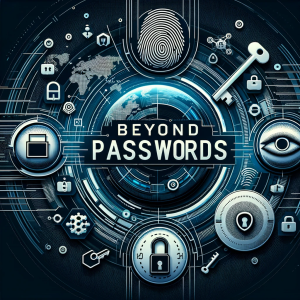 Multi-factor authentication (MFA) has become a critical tool for safeguarding both personal and professional digital assets. This necessity was starkly highlighted by a recent incident involving my niece’s Facebook account. Despite having a strong password, her account was compromised by a bad actor who proceeded to contact her friends and family through Messenger, asking for money. This distressing situation not only caused emotional turmoil but also posed a financial risk to her contacts, including my wife.
Multi-factor authentication (MFA) has become a critical tool for safeguarding both personal and professional digital assets. This necessity was starkly highlighted by a recent incident involving my niece’s Facebook account. Despite having a strong password, her account was compromised by a bad actor who proceeded to contact her friends and family through Messenger, asking for money. This distressing situation not only caused emotional turmoil but also posed a financial risk to her contacts, including my wife.
The Growing Need for MFA
In an age where digital interactions and transactions are commonplace, the security of online accounts is paramount. Cybersecurity threats are evolving rapidly, and traditional password-based security measures are no longer sufficient. This is where MFA steps in as a more robust security approach.
MFA requires users to provide two or more verification factors to gain access to an online account, device, or application. These factors can include something you know (like a password), something you have (like a smartphone or a security token), or something you are (like a fingerprint or facial recognition). By combining these different types of verification, MFA creates a layered defense, making it more difficult for unauthorized users to breach an account.
Professional Implications
In a professional context, the implementation of MFA is critical for several reasons:
- Data Protection: For businesses, protecting sensitive data is a top priority. MFA helps safeguard against data breaches, which can lead to substantial financial losses and damage to reputation.
- Compliance Requirements: Many industries are now mandated by law or industry standards to implement MFA to protect sensitive information.
- Remote Work Vulnerabilities: With the rise of remote work, employees are accessing company resources from various networks, often less secure than in-office networks. MFA adds an extra layer of security in such scenarios.
- Phishing Attacks: MFA can mitigate the risk of phishing attacks, where attackers deceive individuals into revealing their credentials.
Personal Security
On a personal level, the importance of MFA is equally significant. As demonstrated by my niece’s experience, social media accounts contain a wealth of personal information that can be exploited for fraudulent purposes.
- Identity Theft Protection: MFA can prevent identity theft, which can have long-term financial and legal implications for individuals.
- Financial Security: Many personal accounts, like banking and shopping, are linked to financial information. MFA adds an additional barrier against unauthorized financial transactions.
- Privacy Maintenance: Personal accounts often contain private information. MFA helps in maintaining the privacy and integrity of this information.
Real-World Consequences: My Niece’s Experience
The incident with my niece’s Facebook account is a textbook example of why MFA is crucial. The attacker was able to bypass her password, gaining complete control of her account. They then impersonated her, sending fraudulent messages to her contacts, including my wife, asking for money under false pretenses. This kind of social engineering attack is increasingly common and can be emotionally and financially damaging.
Had MFA been enabled, the likelihood of her account being compromised would have been significantly reduced. The additional authentication factor would have presented a formidable barrier to the attacker, even if they had managed to obtain her password.
Implementing MFA
Adopting MFA can be straightforward:
- Select a Reliable MFA Method: Options include SMS codes, email verification, authenticator apps, or biometric verification. Authenticator apps or biometric verifications are generally more secure than SMS or email.
- Educate and Train: Whether in a professional setting or for personal use, educating users on the importance of MFA and training them on how to use it is essential.
- Regularly Update Security Settings: Regularly review and update security settings to ensure that MFA methods are up to date.
- Backup Authentication Methods: Have backup options in place in case the primary authentication method is unavailable.
The incident with my niece’s Facebook account serves as a cautionary tale about the vulnerabilities of relying solely on passwords. The implementation of MFA, both professionally and personally, is not just a recommendation but a necessity in the current digital landscape. It provides a critical barrier against the increasingly sophisticated tactics of cyber attackers. Embracing MFA is a proactive step towards safeguarding our digital lives, protecting not just our information but also the integrity of our digital interactions.
I totally agree with this post! MFA has become a necessity in today’s digital landscape. The increased use of password-cracking attacks and data breaches highlights the importance of adding an additional layer of security to protect sensitive information. It’s great to see more businesses adopting MFA as a standard practice.